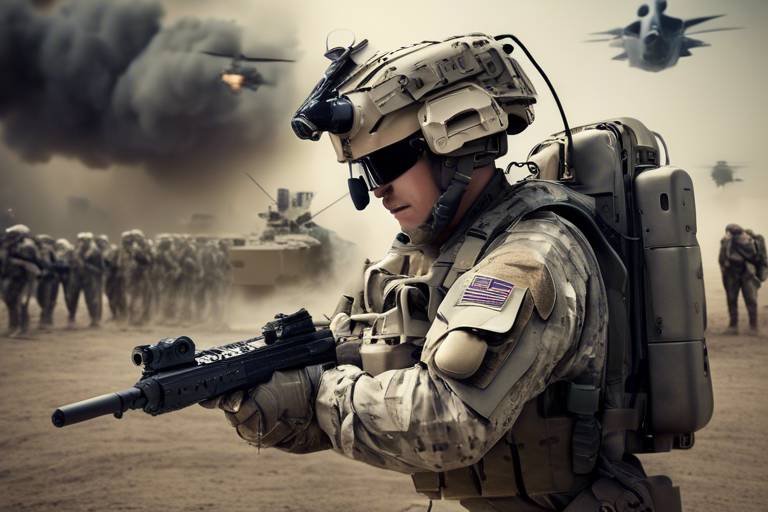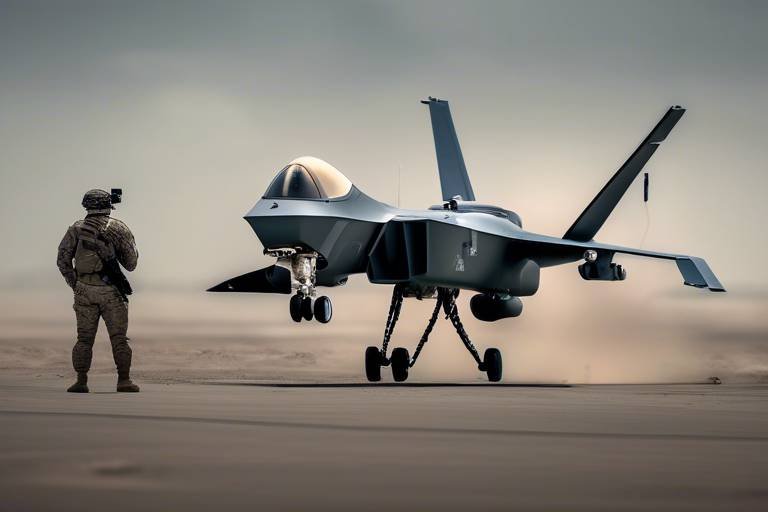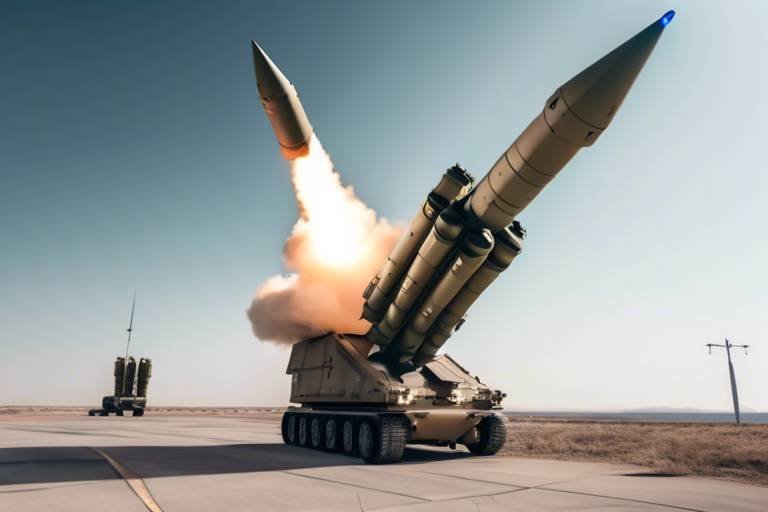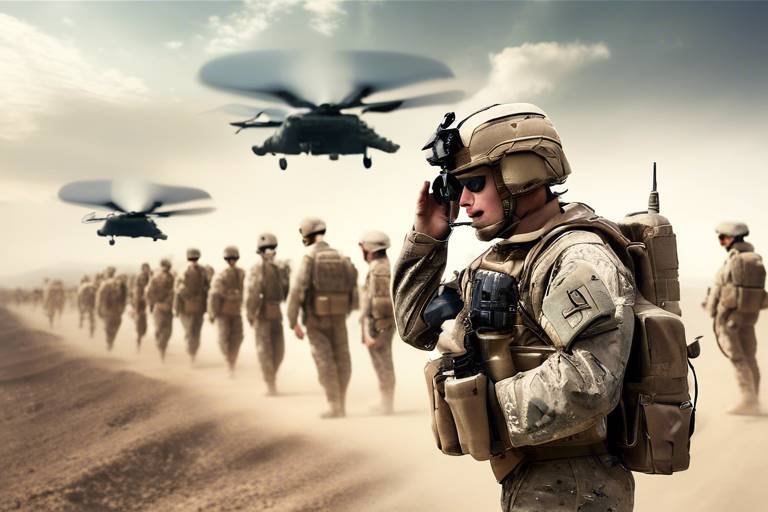How Technology is Shaping Military Supply Chains
In the modern battlefield, the importance of an efficient and responsive military supply chain cannot be overstated. With the rapid evolution of technology, military logistics is undergoing a significant transformation. Imagine a world where supplies reach the front lines not just on time, but ahead of schedule, where every soldier has access to the necessary equipment and resources at their fingertips. This is not a distant dream; it's becoming a reality thanks to the integration of advanced technologies. From artificial intelligence (AI) to blockchain, the military is leveraging these innovations to enhance operational efficiency and effectiveness in warfare.
As we delve deeper into this topic, it's crucial to understand that these advancements are not merely about speed; they are about creating a more responsive and adaptable supply chain. For instance, consider the role of the Internet of Things (IoT) in tracking supplies. Each piece of equipment can be monitored in real-time, providing invaluable data that helps military leaders make informed decisions. This level of visibility ensures that resources are allocated where they are needed most, minimizing waste and maximizing impact.
Furthermore, the implications of these technologies extend beyond logistics. They reshape the very fabric of military operations, allowing for a more agile response to dynamic battlefield conditions. In essence, technology is not just supporting military supply chains; it is redefining them. As we explore the various facets of this transformation, we will uncover how automation, data analytics, and emerging technologies are paving the way for a new era in military logistics.
Innovative technologies such as AI, IoT, and blockchain are revolutionizing military logistics, enhancing visibility, and improving tracking capabilities to ensure timely delivery of supplies to the front lines. These technologies create a network of interconnected devices that communicate seamlessly, providing real-time updates on inventory levels and supply movements. Imagine a supply chain that can predict shortages before they occur or reroute supplies in response to changing conditions on the ground. This is the power of modern logistics driven by technology.
Automation plays a crucial role in streamlining military supply chains, reducing human error, and increasing efficiency through automated inventory management systems and smart warehousing solutions. With automation, the military can manage vast amounts of data and inventory with precision, ensuring that the right supplies are available when and where they are needed. This is akin to having a highly efficient personal assistant who knows your needs before you even ask.
The use of robotics in military supply chains enhances operational capabilities, enabling faster and more precise handling of materials while minimizing risks to personnel in hazardous environments. Robots can be deployed to transport supplies in dangerous areas, reducing the need for human involvement in high-risk situations. This not only saves lives but also ensures that essential supplies reach their destinations without delay.
UAVs are increasingly utilized for logistics and supply delivery, allowing for rapid transportation of essential supplies to remote or inaccessible areas in conflict zones. These aerial vehicles can bypass traditional road networks, delivering supplies directly to the troops who need them most. The speed and efficiency of UAVs are game-changers, providing a tactical advantage that was previously unimaginable.
Autonomous ground vehicles are being developed to transport supplies on the battlefield, improving safety and efficiency while reducing the need for human-operated logistics. These vehicles can navigate challenging terrains and operate in environments that are too dangerous for personnel, ensuring that logistics can continue uninterrupted, even in the most hostile conditions.
Data analytics empowers military supply chain managers to make informed decisions by providing real-time insights into inventory levels, demand forecasting, and supply chain disruptions. With a wealth of data at their fingertips, military leaders can anticipate needs, optimize routes, and respond to challenges with agility. This data-driven approach is akin to having a crystal ball that reveals the best path forward, ensuring that resources are utilized effectively and efficiently.
As military supply chains become more technologically advanced, they also face increased cybersecurity threats, necessitating robust measures to protect sensitive data and maintain operational integrity. The interconnected nature of modern logistics means that a breach in one area can have ripple effects throughout the entire supply chain. Therefore, it's imperative to implement strong cybersecurity protocols to safeguard against potential attacks.
Effective risk assessment and management strategies are essential in identifying vulnerabilities within military supply chains and developing contingency plans to mitigate potential disruptions. By proactively addressing risks, military organizations can ensure continuity in operations and maintain a strategic advantage in the field.
Investing in training and skill development for personnel is critical to ensure they can effectively utilize new technologies and adapt to the evolving landscape of military supply chains. As technology continues to advance, the human element remains a vital component of successful logistics. Ensuring that personnel are equipped with the necessary skills to navigate these changes is paramount for maintaining operational effectiveness.
- What technologies are most impacting military supply chains?
Technologies such as AI, IoT, and blockchain are at the forefront, enhancing visibility and efficiency in logistics.
- How do UAVs improve military logistics?
UAVs allow for rapid delivery of supplies to remote areas, bypassing traditional transport routes and ensuring timely access to resources.
- What are the cybersecurity risks associated with advanced supply chains?
Increased connectivity can lead to vulnerabilities that may be exploited by cyber threats, making robust cybersecurity measures essential.
- Why is training important in military supply chains?
As technologies evolve, personnel must be trained to effectively utilize these tools, ensuring operational effectiveness and adaptability.
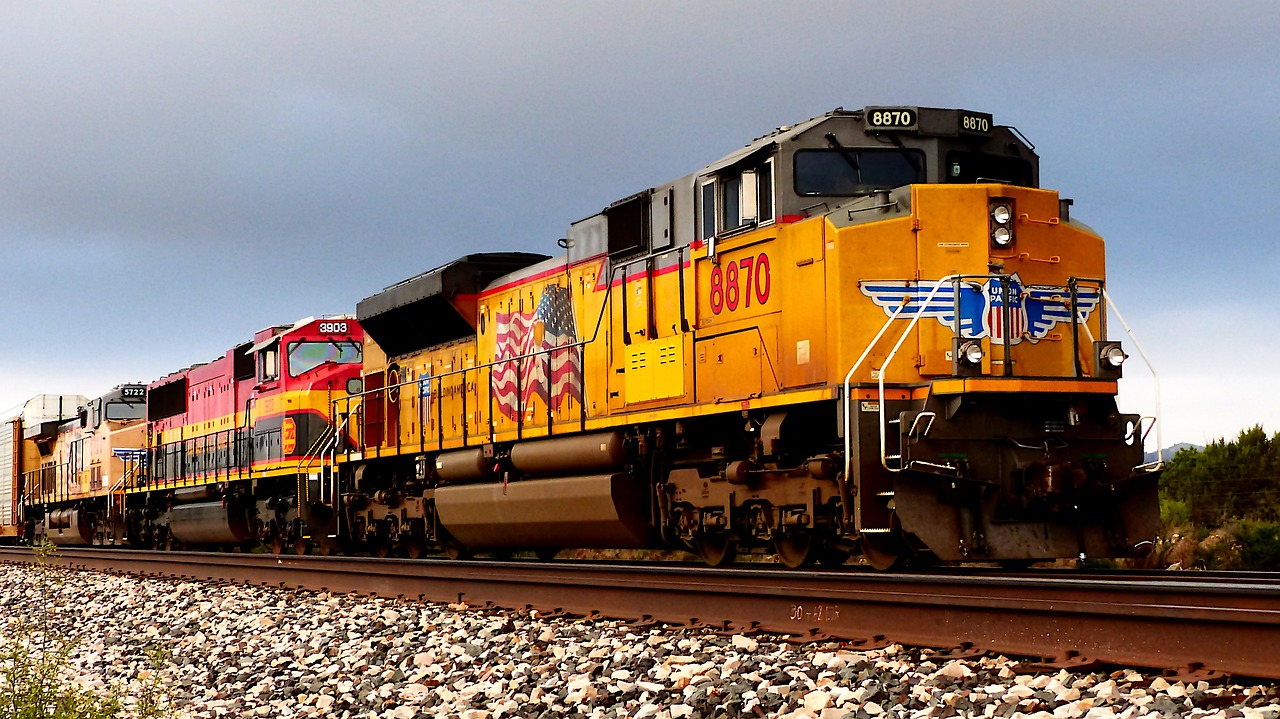
Emerging Technologies in Logistics
In the ever-evolving landscape of military logistics, emerging technologies are not just enhancements; they are game-changers. Imagine a world where supplies reach the front lines faster than a soldier can run. This is becoming a reality thanks to innovations like Artificial Intelligence (AI), the Internet of Things (IoT), and blockchain technology. These technologies are reshaping how military operations manage their supply chains, ensuring that every nut, bolt, and piece of equipment is accounted for and delivered on time.
AI, for instance, is revolutionizing logistics by enabling predictive analytics. It analyzes vast amounts of data to forecast demand, ensuring that military units are never short on essential supplies. Imagine being able to predict the need for ammunition or medical supplies before a conflict escalates. This level of foresight can be the difference between mission success and failure.
Moreover, the IoT connects devices and sensors across the supply chain, providing real-time visibility into inventory levels and shipment statuses. Picture a network of sensors embedded in military vehicles and storage facilities, constantly communicating their conditions and locations. This connectivity means that supply chain managers can track assets in real time, reducing delays and improving operational efficiency.
Then there's blockchain, which offers a secure and transparent way to track the movement of supplies. In a military context, where the stakes are high, the ability to verify the authenticity and origin of every component is crucial. Blockchain technology ensures that all transactions are recorded in an immutable ledger, making it nearly impossible to tamper with data. This level of security is vital for maintaining trust in the supply chain, especially when dealing with sensitive materials.
As these technologies converge, they create a more resilient and responsive military supply chain. For example, consider a scenario where a unit in the field requires urgent medical supplies. With AI predicting the need, IoT devices tracking the inventory, and blockchain ensuring secure transactions, the supply chain can react swiftly. This not only enhances the effectiveness of military operations but also saves lives on the battlefield.
In conclusion, the integration of emerging technologies in military logistics is not just about keeping up with the times; it's about staying ahead of the game. As we continue to innovate and adapt, the military supply chains of the future will be faster, smarter, and more secure than ever before.
- What are the main technologies transforming military logistics?
The primary technologies include AI, IoT, and blockchain, which enhance visibility, predictive analytics, and secure tracking of supplies. - How does AI improve military supply chains?
AI utilizes predictive analytics to forecast demand and optimize inventory levels, ensuring timely delivery of essential supplies. - What role does IoT play in military logistics?
IoT connects devices and sensors, providing real-time visibility into inventory and shipment statuses, thus reducing delays. - Why is blockchain important for military supply chains?
Blockchain ensures secure and transparent tracking of supplies, helping to verify the authenticity and origin of materials.

Automation in Supply Chain Management
In the fast-paced world of military logistics, automation is not just a buzzword; it's a game-changer. Imagine a world where supplies are managed with the precision of a surgeon's scalpel, where human error is minimized, and where efficiency is maximized. That's the promise of automation in military supply chain management. By integrating advanced technologies such as automated inventory management systems and smart warehousing solutions, military operations can ensure that the right materials are delivered at the right time, every time.
One of the most significant advantages of automation is its ability to streamline operations. Traditional supply chains often involve cumbersome manual processes that can lead to delays and inaccuracies. With automation, these processes are transformed. For instance, consider the role of automated inventory systems. These systems can track inventory levels in real-time, alerting supply chain managers when stocks are running low or when supplies are nearing expiration. This level of visibility allows for proactive decision-making, ensuring that military units are always equipped with the necessary resources.
Furthermore, automation reduces the burden on personnel, allowing them to focus on more strategic tasks rather than getting bogged down by repetitive manual work. Think about it: if a soldier spends less time counting supplies and more time strategizing, the entire operation becomes more effective. This shift not only enhances productivity but also boosts morale among troops, as they can rely on technology to handle the tedious aspects of supply management.
Another aspect of automation that deserves attention is smart warehousing solutions. These high-tech warehouses use robotics and AI to optimize storage and retrieval processes. For example, imagine a warehouse where drones swiftly navigate the aisles, picking up supplies and delivering them to loading docks with pinpoint accuracy. This not only speeds up the supply process but also minimizes the risks associated with human handling in potentially hazardous environments. The integration of robotics in warehousing is akin to having a well-oiled machine, where every cog works together seamlessly to achieve a common goal.
To illustrate the impact of automation, consider the following table that outlines the key benefits of automated supply chain management:
| Benefit | Description |
|---|---|
| Increased Efficiency | Automation streamlines processes, reducing time spent on manual tasks. |
| Enhanced Accuracy | Automated systems minimize human error, ensuring precise inventory management. |
| Real-time Tracking | Immediate updates on inventory levels allow for proactive decision-making. |
| Cost Savings | Reduced labor costs and minimized waste lead to significant financial savings. |
As we look to the future, it’s clear that automation will continue to play a pivotal role in military supply chain management. The landscape of warfare is evolving, and so must our approaches to logistics. By embracing automation, military operations can not only enhance their operational efficiency but also ensure that they remain agile and responsive in the face of ever-changing challenges.
- What is automation in supply chain management? Automation in supply chain management refers to the use of technology to streamline and optimize logistics processes, reducing the need for manual intervention.
- How does automation improve efficiency? Automation improves efficiency by minimizing human error, speeding up processes, and allowing personnel to focus on strategic tasks rather than repetitive manual work.
- What are smart warehousing solutions? Smart warehousing solutions use robotics and AI to optimize storage and retrieval processes, making warehouses more efficient and safer.
- What are the benefits of real-time tracking? Real-time tracking allows supply chain managers to make informed decisions quickly, ensuring that resources are allocated effectively and that military units are always prepared.

Robotics in Supply Chains
This article explores the transformative impact of technology on military supply chains, highlighting advancements in logistics, automation, data analytics, and their implications for operational efficiency and effectiveness in modern warfare.
Innovative technologies such as AI, IoT, and blockchain are revolutionizing military logistics, enhancing visibility, and improving tracking capabilities to ensure timely delivery of supplies to the front lines.
Automation plays a crucial role in streamlining military supply chains, reducing human error, and increasing efficiency through automated inventory management systems and smart warehousing solutions.
The integration of robotics in military supply chains is nothing short of a game-changer. Imagine a world where supplies are delivered with pinpoint accuracy, where the risk to human life is minimized, and where operational efficiency skyrockets. Robotics in supply chains not only enhances these capabilities but also transforms the way military logistics operate. For instance, robotic systems can handle tasks such as sorting, packing, and transporting materials more swiftly than their human counterparts, thereby reducing delays and ensuring that troops receive what they need, when they need it.
Moreover, the adaptability of robots allows for seamless operation in various environments, including hazardous locations where human presence could pose significant risks. These machines can work tirelessly, operating around the clock, which is invaluable in military operations where every second counts. As a result, the reliance on robotics leads to improved operational capabilities. For example, in a recent military exercise, robotic systems were deployed to automate the resupply process, which resulted in a 30% reduction in delivery time compared to traditional methods.
Furthermore, the benefits of robotics extend beyond just speed; they also enhance precision in logistics. When equipped with advanced sensors and AI algorithms, these robots can navigate complex terrains and avoid obstacles, ensuring that supplies reach their destination without incident. This level of precision is crucial in military operations, where even minor errors can have significant consequences.
Here’s a quick overview of the key advantages of using robotics in military supply chains:
- Increased Efficiency: Robots can work continuously, reducing the time required for logistics operations.
- Enhanced Safety: Minimizes human exposure to dangerous environments, protecting personnel.
- Improved Accuracy: Advanced navigation systems ensure precise delivery of supplies.
- Cost-Effectiveness: Reduces labor costs and operational delays, leading to better resource allocation.
As military organizations continue to embrace robotics, the landscape of supply chains will undoubtedly evolve. The future may see fully autonomous supply chains where robots not only deliver supplies but also monitor inventory levels, predict demand, and communicate with other automated systems. This interconnectedness will not only boost efficiency but also create a more resilient supply chain capable of adapting to the dynamic nature of modern warfare.
As military supply chains become more technologically advanced, they also face increased cybersecurity threats, necessitating robust measures to protect sensitive data and maintain operational integrity.
Effective risk assessment and management strategies are essential in identifying vulnerabilities within military supply chains and developing contingency plans to mitigate potential disruptions.
Investing in training and skill development for personnel is critical to ensure they can effectively utilize new technologies and adapt to the evolving landscape of military supply chains.
- How are robots used in military supply chains? Robots are used for sorting, packing, and transporting materials, significantly improving efficiency and safety.
- What are the benefits of using robotics in logistics? Key benefits include increased efficiency, enhanced safety, improved accuracy, and cost-effectiveness.
- Can robots operate in hazardous environments? Yes, robots are designed to operate in dangerous conditions, minimizing risks to human personnel.
- How does robotics impact delivery times? Robotics can reduce delivery times by automating processes that would typically take longer with human labor.
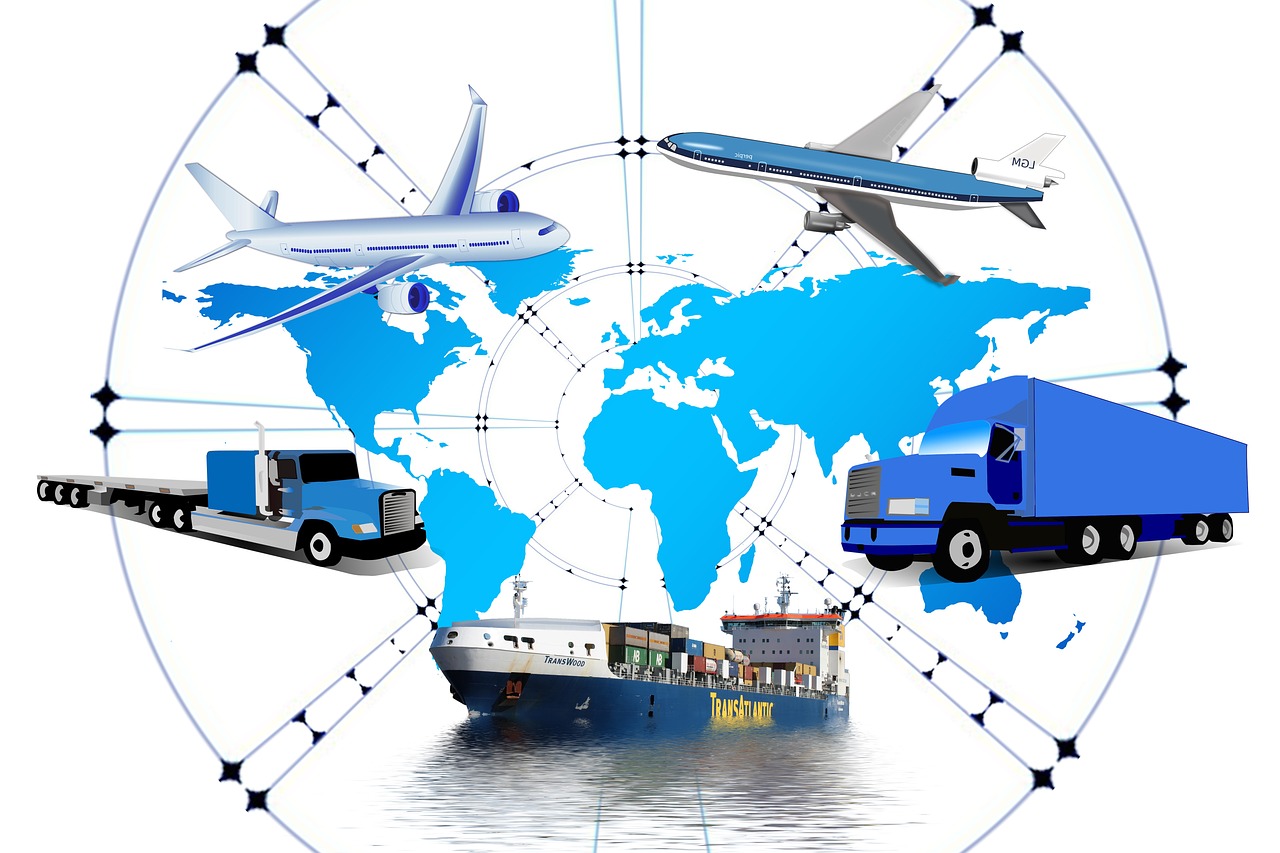
Unmanned Aerial Vehicles (UAVs)
Unmanned Aerial Vehicles (UAVs), commonly known as drones, have become a pivotal component in modern military logistics. These sophisticated machines are not just flying cameras; they are game-changers that enhance the efficiency of supply chains by enabling rapid transportation of essential supplies to remote or inaccessible areas, especially in conflict zones. Imagine a battlefield where traditional transport methods are hindered by terrain, enemy fire, or logistical delays. UAVs swoop in like modern-day heroes, delivering everything from ammunition to medical supplies with pinpoint accuracy.
The beauty of UAVs lies in their ability to operate autonomously or be remotely piloted, allowing military personnel to focus on other critical tasks. With advancements in technology, these drones are equipped with advanced navigation systems, allowing them to avoid obstacles and reach their destinations swiftly. For instance, a UAV can traverse rugged landscapes, avoiding enemy detection, while traditional vehicles might struggle to navigate the same terrain. This not only saves time but also minimizes risks to human life.
Moreover, UAVs can carry a variety of payloads, which can be adjusted based on mission requirements. They can deliver supplies directly to troops on the front lines, or even conduct surveillance to assess the situation before a supply drop. This dual functionality makes them indispensable in modern warfare. The table below illustrates some of the key advantages of using UAVs in military supply chains:
| Advantage | Description |
|---|---|
| Speed | UAVs can quickly transport supplies, reducing delivery times significantly. |
| Access | They can reach remote or dangerous locations where traditional vehicles cannot go. |
| Cost-Effectiveness | Lower operational costs compared to manned missions. |
| Safety | Minimizes risk to personnel by reducing the need for human-operated logistics in hazardous areas. |
However, the integration of UAVs into military supply chains is not without challenges. Issues such as airspace regulation, potential enemy countermeasures, and the need for robust communication systems can complicate their deployment. Yet, the military continues to invest in research and development to overcome these hurdles. As technology advances, we can expect UAVs to become even more capable, with improved payload capacities and enhanced navigation systems.
In conclusion, UAVs are revolutionizing military logistics by providing a flexible, efficient, and safe means of delivering supplies. Their ability to adapt to the ever-changing dynamics of warfare makes them an essential asset in ensuring that troops receive the support they need, when they need it. The future of military supply chains is undoubtedly intertwined with the continued evolution of UAV technology, and as we move forward, the possibilities are both exciting and limitless.
- What are UAVs used for in military logistics? UAVs are primarily used for transporting supplies, conducting surveillance, and assessing battlefield conditions.
- How do UAVs enhance supply chain efficiency? They provide rapid delivery of supplies to remote locations, reducing delivery times and minimizing risks to personnel.
- What are the challenges associated with using UAVs? Challenges include airspace regulation, potential enemy countermeasures, and the need for reliable communication systems.
- Are UAVs cost-effective? Yes, UAVs generally have lower operational costs compared to manned missions, making them a cost-effective solution for military logistics.

Autonomous Ground Vehicles
Autonomous Ground Vehicles (AGVs) are revolutionizing the military landscape in ways we never thought possible. Imagine a convoy of vehicles moving supplies across a battlefield without a single human at the wheel. Sounds like something out of a sci-fi movie, right? But this is becoming a reality as technology advances. These vehicles are not just about convenience; they are about enhancing safety and efficiency in logistics operations. By taking the human element out of the equation, AGVs minimize the risks associated with transporting supplies in hostile environments.
One of the most significant advantages of AGVs is their ability to operate in dangerous conditions where human lives would be at risk. Picture a scenario where troops are stationed in a war zone, and they require essential supplies like ammunition, food, or medical kits. Instead of sending soldiers into potentially lethal situations, AGVs can be deployed to deliver these supplies safely. This not only protects personnel but also ensures that critical resources are delivered on time, keeping operations running smoothly.
Furthermore, AGVs are equipped with advanced navigation systems that allow them to traverse complex terrains and avoid obstacles. They utilize a combination of GPS, LiDAR, and computer vision to map their surroundings and make real-time decisions. This technology is akin to how a blind person uses a cane to navigate; AGVs 'feel' their environment and react accordingly. As these vehicles become more sophisticated, their ability to operate autonomously will only improve, leading to even greater operational effectiveness.
In addition to their autonomous capabilities, AGVs can be integrated with other technologies, such as AI and IoT, to enhance their functionality. For instance, an AGV can communicate with other vehicles and supply chain management systems to optimize routes and reduce delivery times. This interconnectedness is crucial in a military context where every second counts. Imagine a scenario where an AGV receives real-time data about enemy movements and adjusts its route accordingly to avoid detection. This level of adaptability can be a game-changer on the battlefield.
However, the implementation of AGVs is not without challenges. Issues such as cybersecurity and technical malfunctions pose risks that need to be addressed. As military operations become increasingly reliant on technology, the potential for hacking or system failures could jeopardize missions. Therefore, robust cybersecurity measures and thorough testing protocols are essential to ensure the reliability of AGVs in the field.
In conclusion, Autonomous Ground Vehicles are set to play a pivotal role in the future of military logistics. By enhancing safety, improving efficiency, and integrating with other advanced technologies, they represent a significant leap forward in how supplies are managed on the battlefield. As we continue to explore the possibilities of AGVs, one thing is clear: the future of military supply chains is autonomous, and it’s just getting started.
- What are Autonomous Ground Vehicles (AGVs)?
AGVs are unmanned vehicles designed to transport supplies and materials in military operations, enhancing safety and efficiency. - How do AGVs navigate in complex environments?
They use a combination of GPS, LiDAR, and computer vision technologies to map their surroundings and make real-time decisions. - What are the benefits of using AGVs in military logistics?
AGVs reduce risks to personnel, ensure timely delivery of supplies, and can adapt to changing battlefield conditions. - What challenges do AGVs face?
Challenges include cybersecurity threats and technical malfunctions that could impact their reliability and effectiveness.
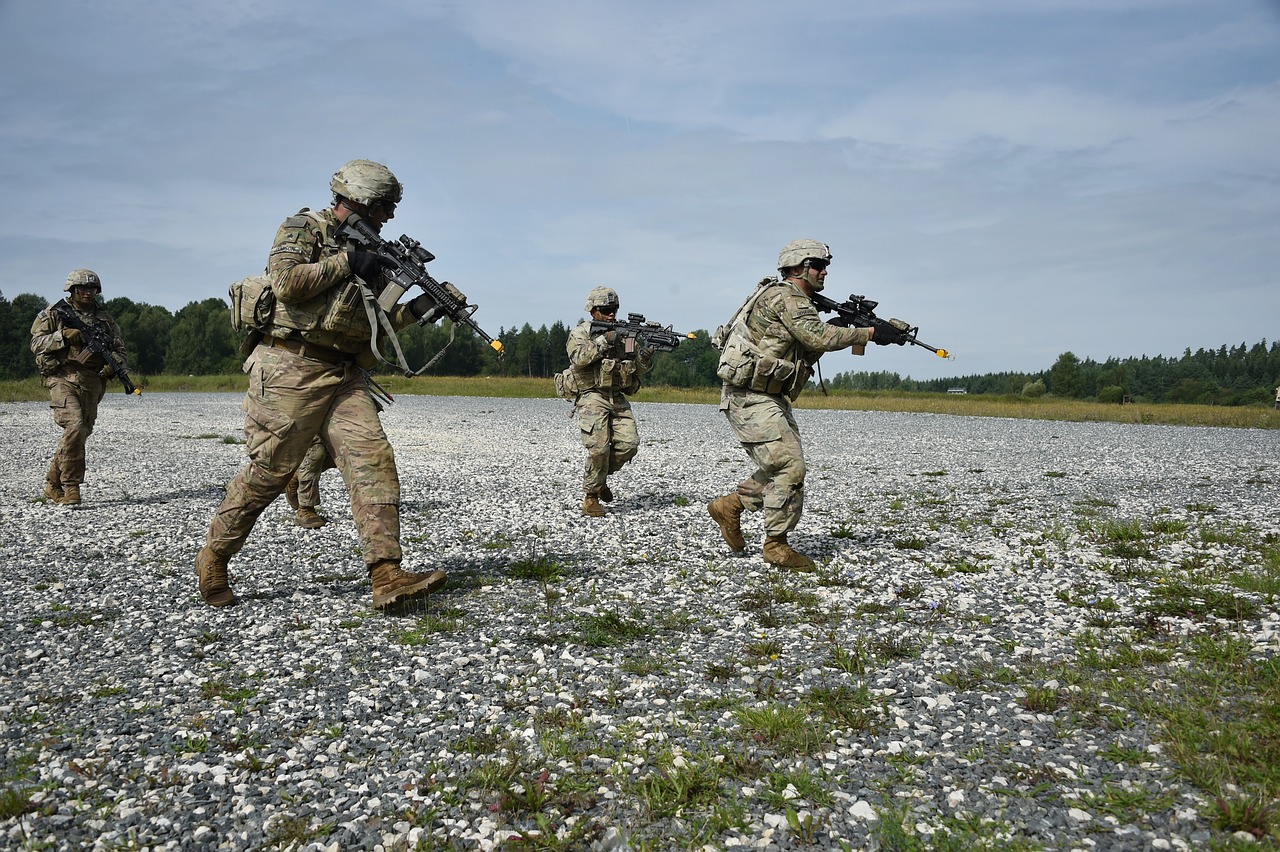
Data Analytics for Decision Making
In the fast-paced world of military logistics, data analytics has emerged as a game-changer, providing the tools necessary for informed decision-making. Imagine trying to navigate a vast ocean without a compass; that's what managing a military supply chain would feel like without the insights offered by data analytics. By harnessing vast amounts of data, military supply chain managers can gain real-time insights into inventory levels, demand forecasting, and potential supply chain disruptions. This not only enhances operational efficiency but also ensures that troops are well-equipped and ready to respond to any situation.
One of the most significant benefits of data analytics is its ability to predict future needs based on historical data. For example, by analyzing past supply usage patterns, military planners can forecast what supplies will be needed in upcoming operations, thereby optimizing inventory levels. This predictive capability can significantly reduce waste and ensure that essential supplies are always available when needed. In fact, a recent study showed that military units utilizing data analytics for demand forecasting saw a 20% reduction in excess inventory, freeing up valuable resources for other critical areas.
Furthermore, data analytics can help identify vulnerabilities within the supply chain. By analyzing various data points, such as transportation routes and supplier reliability, military logisticians can pinpoint potential bottlenecks or weaknesses. This proactive approach allows for the development of contingency plans that can be activated in case of disruptions. For instance, if a particular route is identified as prone to delays, alternative routes can be planned in advance, ensuring that supplies reach the front lines without unnecessary delays.
To illustrate the impact of data analytics on military supply chains, consider the following table that highlights key benefits:
| Benefit | Description |
|---|---|
| Real-Time Insights | Access to live data for immediate decision-making. |
| Demand Forecasting | Predicting future supply needs based on historical data. |
| Vulnerability Identification | Pinpointing potential weaknesses in the supply chain. |
| Resource Optimization | Reducing waste and ensuring efficient use of resources. |
Moreover, the integration of machine learning algorithms into data analytics systems can further enhance the decision-making process. These algorithms can analyze complex datasets far beyond human capability, identifying patterns and trends that might otherwise go unnoticed. For example, they can help predict when equipment will require maintenance, allowing for timely interventions that prevent supply chain disruptions.
In conclusion, the role of data analytics in military supply chains cannot be overstated. It empowers decision-makers with the insights needed to optimize operations, reduce waste, and enhance overall effectiveness. As military operations continue to evolve, leveraging data analytics will be crucial in maintaining a competitive edge on the battlefield.
- What is data analytics in military supply chains?
Data analytics involves the use of statistical and computational methods to analyze data, providing insights that aid in decision-making, resource allocation, and operational efficiency. - How does data analytics improve inventory management?
By predicting future supply needs and identifying trends, data analytics helps military planners maintain optimal inventory levels, reducing waste and ensuring timely availability of supplies. - What technologies are used in military data analytics?
Technologies such as artificial intelligence, machine learning, and specialized software tools are commonly used to analyze data and generate insights in military supply chains. - Can data analytics help during emergencies?
Yes, data analytics can identify vulnerabilities and potential disruptions, allowing military logisticians to develop contingency plans and respond effectively during emergencies.

Cybersecurity Challenges in Supply Chains
The integration of advanced technologies in military supply chains has undoubtedly propelled operational efficiency to new heights. However, this **technological evolution** has also paved the way for a host of cybersecurity challenges that military organizations must confront. As supply chains become increasingly interconnected and reliant on digital systems, the **risk of cyberattacks** escalates dramatically. Can you imagine the chaos that would ensue if critical supply chain data were compromised? The implications could be catastrophic, affecting not just logistics but the very safety of personnel on the front lines.
One of the primary challenges in ensuring cybersecurity within military supply chains is the **increased attack surface**. With the adoption of technologies like the Internet of Things (IoT) and cloud computing, numerous endpoints are created, each potentially vulnerable to cyber threats. As these systems communicate and share data, a breach in one area can cascade, leading to significant vulnerabilities across the entire network. This is akin to leaving multiple doors unlocked in a secure facility; while each door may seem minor, collectively they pose a major risk.
Moreover, the **complexity of supply chain operations** adds another layer of difficulty. Military supply chains often involve numerous stakeholders, including suppliers, manufacturers, and logistics providers. Each of these entities may have different security protocols and standards, making it challenging to maintain a unified defense strategy. For instance, if a supplier has inadequate cybersecurity measures, it could compromise the entire supply chain. This interconnectedness necessitates a **collaborative approach** to cybersecurity, where all parties are aligned and committed to safeguarding sensitive information.
To combat these challenges, military organizations must implement robust cybersecurity frameworks. This includes conducting regular risk assessments to identify vulnerabilities and potential threat vectors. Organizations can use tools such as penetration testing and vulnerability scanning to proactively address weaknesses before they can be exploited. A comprehensive approach to **risk management** is essential, focusing not only on technology but also on processes and people. After all, the human element is often the weakest link in cybersecurity.
Furthermore, training and skill development for personnel is crucial. As technology evolves, so too must the knowledge of those operating within the supply chain. Regular training sessions on cybersecurity best practices can help ensure that everyone is aware of potential threats and knows how to respond effectively. This is not just about technology; it’s about fostering a **cybersecurity culture** within the organization where every individual understands their role in protecting sensitive data.
In summary, while technology has transformed military supply chains for the better, it has also introduced significant cybersecurity challenges. Organizations must remain vigilant, adopting proactive strategies to safeguard their operations against potential cyber threats. The stakes are high, and the cost of inaction could be far too great. The question remains: are military supply chains prepared to face the cyber challenges of tomorrow?
- What are the main cybersecurity threats to military supply chains? Cybersecurity threats include phishing attacks, ransomware, data breaches, and attacks on IoT devices.
- How can organizations improve their cybersecurity posture? Organizations can improve their cybersecurity by conducting regular risk assessments, implementing robust security protocols, and providing ongoing training for personnel.
- Why is collaboration important in securing military supply chains? Collaboration is essential because military supply chains involve multiple stakeholders, and a breach in one area can affect the entire network.
- What role does training play in cybersecurity? Training helps personnel understand potential threats and equips them with the knowledge to respond effectively, thereby reducing the risk of human error.

Risk Assessment and Management
In the ever-evolving landscape of military supply chains, have emerged as critical components for ensuring operational success. As technology advances, the complexity of potential risks increases, making it essential for military organizations to develop robust strategies to identify, evaluate, and mitigate these risks effectively. Imagine navigating a minefield; one wrong step can lead to catastrophic consequences. Similarly, in supply chains, a single oversight can disrupt the entire operation.
Effective risk management begins with a thorough risk assessment process. This involves identifying vulnerabilities within the supply chain, which can range from cyber threats to logistical challenges. For instance, consider the various factors that can impact supply delivery:
| Risk Factor | Description |
|---|---|
| Cybersecurity Threats | Potential breaches that could compromise sensitive data and disrupt operations. |
| Supply Chain Disruptions | Natural disasters, geopolitical tensions, or logistical failures that hinder supply flow. |
| Technological Failures | Malfunctions in automated systems or equipment that can halt operations. |
Once these risks are identified, the next step is to evaluate their potential impact and likelihood. This evaluation should not be a one-time event; it requires ongoing monitoring and adaptation. By employing advanced data analytics, military supply chain managers can gain real-time insights into emerging threats and adjust their strategies accordingly. This continuous loop of assessment and adjustment is akin to a seasoned sailor adjusting their sails based on changing winds.
Moreover, developing contingency plans is essential in risk management. These plans should outline specific actions to take in the event of a disruption. For example, if a cyberattack compromises the supply chain's data, having a backup system in place ensures that operations can continue with minimal interruption. The key is to anticipate potential scenarios and prepare for them before they become crises.
Training personnel is another vital aspect of effective risk management. As new technologies are integrated into military supply chains, staff must be equipped with the knowledge and skills to navigate these tools effectively. Regular training sessions can help personnel stay updated on the latest technologies and best practices in risk management. Think of it as a sports team practicing plays; the more prepared they are, the better they perform under pressure.
In conclusion, risk assessment and management in military supply chains are not just about avoiding pitfalls; they are about ensuring resilience and adaptability in an unpredictable environment. By identifying risks, evaluating their potential impacts, developing contingency plans, and investing in personnel training, military organizations can enhance their operational efficiency and effectiveness in modern warfare.
- What is risk assessment in military supply chains? Risk assessment involves identifying and evaluating potential vulnerabilities that could disrupt supply chain operations.
- Why is training important for risk management? Training ensures personnel can effectively use new technologies and adapt to evolving risks, enhancing overall supply chain resilience.
- How can data analytics aid in risk management? Data analytics provides real-time insights that help supply chain managers make informed decisions regarding potential threats and disruptions.

Training and Skill Development
In the rapidly evolving landscape of military supply chains, are not just important—they are absolutely critical. As new technologies like AI, robotics, and data analytics become integral to logistics operations, military personnel must be equipped with the knowledge and skills to harness these tools effectively. Imagine a soldier who has been trained with traditional methods suddenly faced with an automated inventory system; without proper training, they could easily become overwhelmed, leading to inefficiencies and potential mission failures.
To ensure that military personnel can adapt to these changes, comprehensive training programs must be implemented. These programs should focus on several key areas:
- Technology Familiarization: Soldiers need to understand how to operate and troubleshoot new technologies, from automated warehousing systems to UAVs.
- Data Analysis Skills: With the rise of data-driven decision-making, personnel must learn how to interpret data analytics to optimize supply chain operations.
- Cybersecurity Awareness: As supply chains become more digital, understanding cybersecurity protocols is essential to protect sensitive information.
Moreover, training should not be a one-time event. Instead, it should be an ongoing process, incorporating the latest advancements in technology and logistics. Regular workshops, simulations, and hands-on training sessions can help reinforce skills and keep personnel up-to-date with emerging trends. For example, a soldier might participate in a simulation where they must manage a supply chain crisis using real-time data analytics, providing them with practical experience that can be invaluable in actual operations.
Additionally, collaboration with technology providers can enhance training efforts. By working closely with companies that specialize in military logistics technology, the armed forces can develop tailored training programs that address specific needs and challenges. This partnership can also facilitate the creation of training materials that are both engaging and informative, ensuring that service members are not just passive learners but active participants in their development.
Finally, it’s important to foster a culture of continuous learning within military organizations. Encouraging personnel to pursue further education, certifications, or even advanced degrees in logistics and supply chain management can lead to a more knowledgeable and skilled workforce. The military can set up mentorship programs where experienced personnel guide newcomers, sharing insights and best practices that can enhance operational effectiveness.
Investing in training and skill development is not just a matter of efficiency; it's about ensuring the safety and success of military operations. As technology continues to shape the future of military supply chains, the ability of personnel to adapt and excel will be paramount. After all, in a world where every second counts, having a well-trained team can mean the difference between victory and defeat.
- Why is training important in military supply chains?
Training is essential to ensure personnel can effectively use new technologies, make informed decisions, and adapt to changes in logistics operations. - What areas should military training focus on?
Training should focus on technology familiarization, data analysis skills, and cybersecurity awareness to prepare personnel for modern challenges. - How can military organizations enhance training programs?
By collaborating with technology providers, incorporating simulations, and fostering a culture of continuous learning, military organizations can enhance their training programs.
Frequently Asked Questions
- How is technology transforming military supply chains?
Technology is revolutionizing military supply chains by introducing advanced logistics solutions, automation, and data analytics. These innovations enhance visibility, streamline operations, and ensure timely delivery of supplies, ultimately improving operational efficiency and effectiveness on the battlefield.
- What role does automation play in military supply chains?
Automation significantly reduces human error and increases efficiency in military supply chains. Automated inventory management systems and smart warehousing solutions help manage resources more effectively, allowing military personnel to focus on critical tasks rather than manual processes.
- How are robotics utilized in military logistics?
Robotics enhance operational capabilities by enabling faster and more precise handling of materials. They minimize risks to personnel, especially in hazardous environments, and contribute to safer and more efficient supply chain operations.
- What are the benefits of using Unmanned Aerial Vehicles (UAVs) in logistics?
UAVs facilitate rapid transportation of essential supplies, especially to remote or inaccessible areas in conflict zones. They allow for quick delivery without putting personnel at risk, thereby improving the overall efficiency of military logistics.
- How do autonomous ground vehicles improve military supply chains?
Autonomous ground vehicles enhance safety and efficiency by transporting supplies on the battlefield without human operators. This technology reduces the risk of human error and allows for more reliable logistics operations in challenging environments.
- What is the importance of data analytics in military supply chains?
Data analytics empowers supply chain managers with real-time insights into inventory levels, demand forecasting, and potential disruptions. This information is crucial for making informed decisions and ensuring that military operations run smoothly.
- What cybersecurity challenges do military supply chains face?
As military supply chains become more advanced, they encounter increased cybersecurity threats. Protecting sensitive data and maintaining operational integrity are paramount, necessitating robust cybersecurity measures to mitigate risks.
- Why is risk assessment essential in military supply chains?
Effective risk assessment is vital for identifying vulnerabilities within military supply chains. By developing contingency plans, military organizations can mitigate potential disruptions and ensure continuity of operations during crises.
- How can personnel be prepared for new technologies in military logistics?
Investing in training and skill development is critical to prepare personnel for utilizing new technologies. Continuous education ensures that military staff can adapt to the evolving landscape of military supply chains and maximize the benefits of technological advancements.







